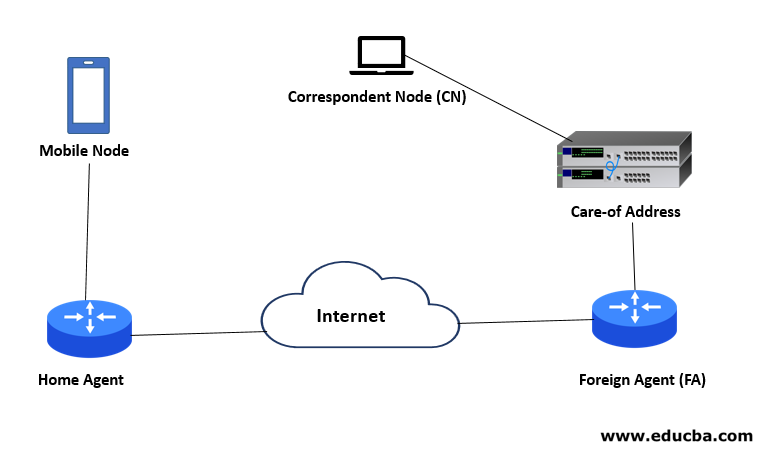Mobile Phones IP Address: Understanding the Dynamic Nature of IP Assignments on Mobile Networks
Understanding how IP addresses are assigned to mobile phones
Mobile phones do not typically have fixed IP addresses like devices connected to home or office networks. Instead, they are dynamically assigned temporary IP addresses each time they connect to a cellular or wireless network. This dynamic nature allows mobile networks to efficiently manage IP addresses as devices frequently connect and disconnect. The basic process works as follows: Mobile networks utilize DHCP (Dynamic Host Configuration Protocol) to automatically assign unused IP addresses to devices on demand. When a phone connects to a network, it sends a DHCP request. The network then leases the phone a temporary IP address for a certain period of time, usually a few hours or days. Before the lease expires, the phone’s DHCP client automatically renews the lease to maintain the same IP. However, things like restarting the phone or moving between different mobile network cell towers can sometimes trigger an assignment of a new temporary IP address. This ensures each device has a unique address while allowing efficient reuse of limited IP addresses. The dynamic approach contrasts with fixed public IP addressing used on traditional networks.

How Wi-Fi connections impact a device’s IP assignment
Whether a mobile phone receives a fixed or changing IP depends on the specific network it is connected to. Connecting to local Wi-Fi hotspots almost always results in obtaining a new IP address upon each connection. Most home and business Wi-Fi routers utilize DHCP and dynamically assign addresses to connect devices. Comparatively, connections made directly over a mobile carrier’s cellular data network may appear more stable, maintaining the same IP address for longer periods. In reality, the carrier is using DHCP in the same way but renewing the device’s IP lease regularly to avoid changing the address unnecessarily between renewals. So the IP essentially remains fixed for as long as the lease is renewed. Upon switching between cellular and Wi-Fi though, or moving out of range of one network to another, the phone is very likely to obtain a new temporary IP. This ensures address uniqueness across different access points.
How mobile network operators manage public IP pools
A key reason for DHCP-based dynamic addressing on mobile networks relates to conserving the limited supply of public IPv4 addresses. Mobile carriers receive blocks of public IPs from regional internet registries but need to assign them sparingly across all connecting devices. By allocating temporary private IPs from their own internal address pools via DHCP, operators can translate a much larger number of phones to a much smaller set of public addresses using Network Address Translation (NAT). NAT allows multiple private IP addresses to share public IP addresses, similar to home routers. This dynamic IP masquerading with NAT is crucial for supporting the huge number of simultaneous mobile connections required by modern networks. It wouldn’t be feasible for each phone to maintain a persistent public IP at all times. Dynamic address management via DHCP is an important technology underlying ubiquitous mobile connectivity.
Why end-users may see apparent IP address stability
From an end-user standpoint, the IP address a mobile device obtains from the carrier’s network may seem stable and fixed over long periods. However, behind the scenes the carrier is actively managing address leases through DHCP. As mentioned, as long as a device’s IP lease is continuously renewed before expiration, it will retain the same address. Carriers aim to renew leases regularly to avoid frequent changes while also allowing new assignment flexibility. Additionally, troubleshooting tools may only display the public IP address a device has been translated to by the carrier’s Network Address Translation (NAT). This public IP component could remain static for significantly longer durations than the private IP address itself. As a result, end-users are largely unaware of dynamic IP assignment handling unless experiencing a visible disruption that triggers a new address, like restarting the device or changing networks through travel. In reality, carriers leverage DHCP and NAT technologies to enable mobility while conserving public IPv4 resources.
How IP assignment handling benefits both users and providers
The dynamic IP assignment approach taken by mobile carriers benefits both end-users and network operators. It allows for maximum flexibility in managing limited public IP blocks to support vast numbers of simultaneous users. IP masquerading also enhances network security by hiding internal addressing.
For customers, the process is entirely transparent and automatic. Devices obtain connectivity upon demand and retain network identification as needed without requiring static configuration. Mobility is seamlessly enabled regardless of IP handling complexities.
This dynamic nature does mean certain client-server applications may break if IP changes. But workarounds exist using uniquely identifiable device credentials rather than IP alone. Overall, the advantages of dynamic IP masquerading through DHCP and NAT have been crucial enablers of modern “always-on” mobile networking ubiquity.
